Ditch the wire! 7 features you should look for in a robot lawn mower
Why bury cables when you can go wire free?

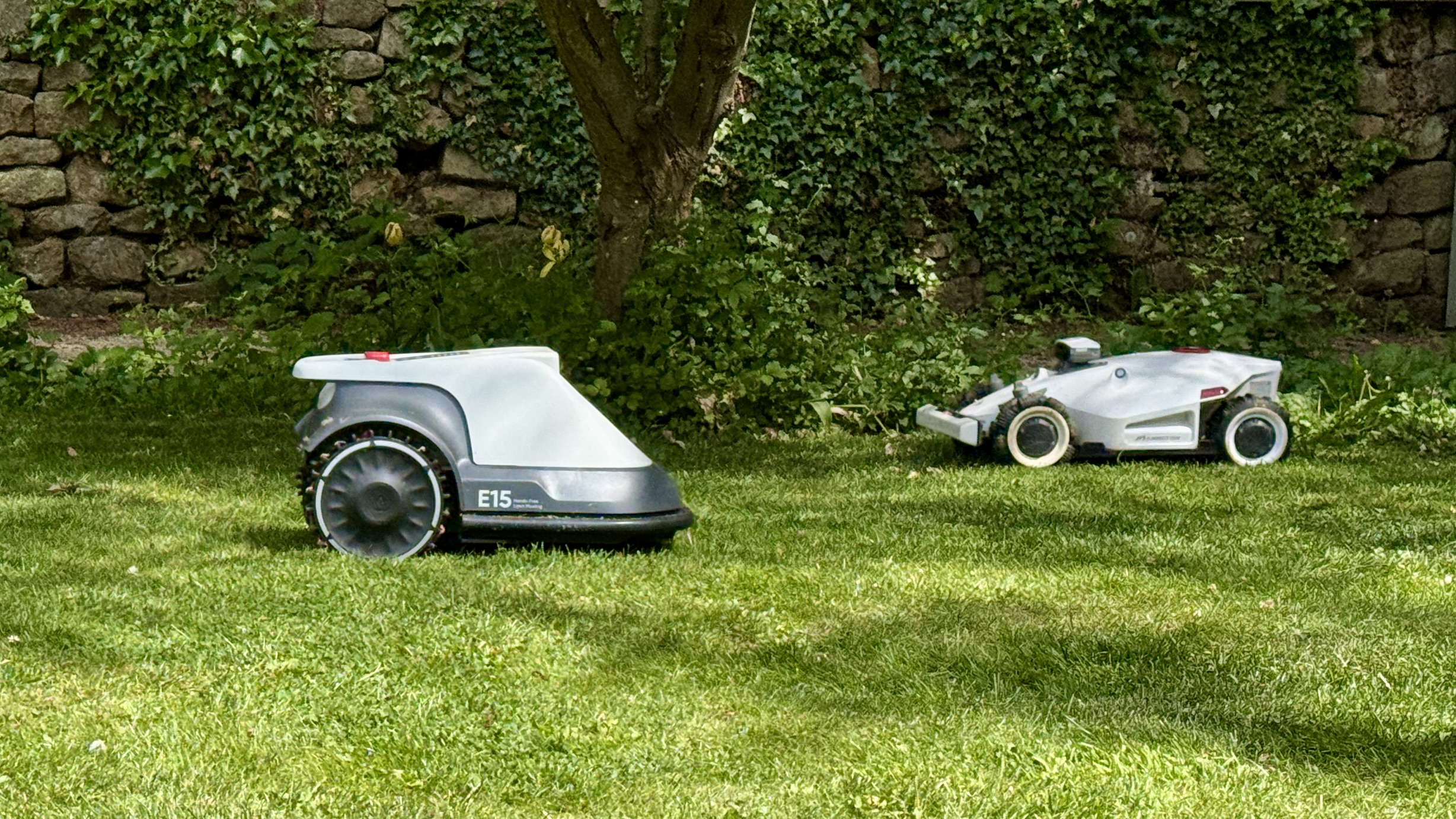
Robot lawn mowers are nothing new. In fact they’ve been around since the mid-1990s when the very first commercially available models from Swedish brand Husqvarna emerged as a niche luxury for tech enthusiasts. However, what began as a very simple concept of having a dumb robot guided by buried boundary wire has rapidly evolved during the past two years into a sophisticated ecosystem of autonomous wire-free machines that can not only navigate a lawn and its borders using centimetre-accurate GPS and high-definition cameras, but cut lawns in beautiful parallel stripes while avoiding obstacles like furniture and toys.
Wired robot models are still widely available today – and some are featured in T3’s guide to the best robot lawn mowers – but I’m here to tell you that the time has come to consider avoiding this comparatively unintelligent form of robotics in favour of embracing the wonders of AI-empowered RTK GPS and camera navigation, impressive obstacle avoidance and app-controlled simplicity.
The latest range of wire-free RTK GPS and camera-based robot lawn mowers represent the cutting edge in automated lawn care, offering a smarter, cleaner and far more efficient way to maintain your lawn. The result is a mowing experience that is faster to set up, more adaptable and ultimately more intelligent. Yes, wireless models are currently more expensive to buy than their wired counterparts, but truth is that wireless mower prices have already started tumbling so now is a good time to climb on the bandwagon and start exploiting this modern tech to its fullest degree.
Combined with quiet brushless motors, app-based controls and eco-friendly operation, wire-free RTK GPS and camera robot mowers are not just better for your lawn – they’re better for your lifestyle.
1. Installation

Segaway Navimow iSeries
One of the biggest advantages of wire-free RTK GPS and camera-based mowers is their ease of installation. With traditional wired systems, users need to bury a physical perimeter wire around the lawn’s edge, flower beds and other no-go zones which is a time-consuming and exceedingly frustrating task.
By contrast, wire-free systems from the likes of Mammotion, Anthbot, Eufy and Segway eliminate this hassle entirely. With RTK GPS, the mower creates a virtual boundary via satellite positioning and/or an AI-empowered camera and these digital zones can be adjusted or moved at any time via a smartphone app, which is perfect for people who frequently redesign their garden layout, move flower beds or introduce new landscaping features. The vast majority of today’s wireless models can be easily installed by the user in about 30 minutes, from opening the box to cutting the lawn.
2. Mapping
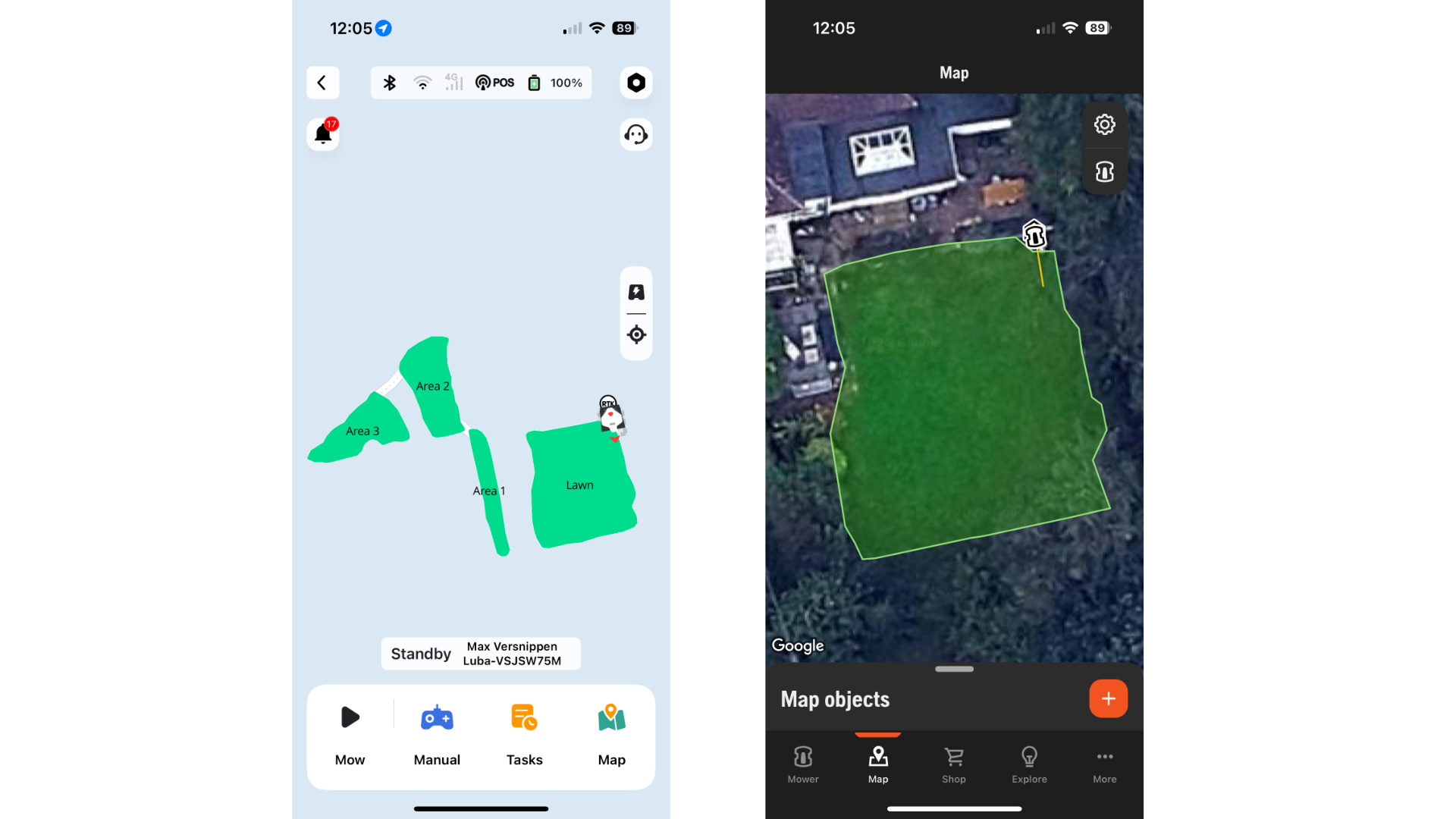
Maps for Mammotion LUBA 2 (left) and Husqvarna e305 (right)
As is the case with any best robot vacuum cleaner, the first thing you will need to do following installation of a wireless mowbot is to get it to map your lawn space. This can usually be done it two ways – automatically where the robot trundles off on its own to follow the borders of your lawn, or manually where the user drives the robot around the perimeter of the lawn like an RC car.
Get all the latest news, reviews, deals and buying guides on gorgeous tech, home and active products from the T3 experts
While the automatic method is perfect for lawns with well-defined borders, it might be better to opt for manual mapping if your lawn has scruffy borders where it might be difficult for the robot to discern between grass and plants. Once completed, a perfectly detailed map of your lawn and its area size is presented on the model’s accompanying app and this map can be easily adjusted by heading to the app’s lawn editing settings.
3. Navigation

Anthbot Genie cutting to the edge
Most modern wireless robot mowers use centimetre-accurate RTK GPS for navigation. However, this method does require a good line of sight to as many satellites as possible so positioning of the unit’s accompanying RTK antennae is quite critical to successful installation. In most instances the supplied ground spike antennae will do the job but if your garden is surrounded by trees you may need to opt for an optional wall-mounted aerial for better reception. Alternatively, some companies like Mammotion and Husqvarna now also provide the wherewithal run their RTK-guided robots over their cloud-based WiFi services.
The use of cameras and LiDAR that view the world like a human eye is a relatively new development and you can expect to see more of this technology in the near future. AI-empowered camera- and LiDAR-based robot mowers don’t require GPS because they are able to navigate on sight alone and know exactly where they are on the lawn at any given time.
4. Obstacle avoidance

Eufy E15 deftly avoiding a dog-chewed plant pot
We are already starting to see a few models coming to market that use a combination of RTK GPS and cameras to navigate even the most complex of lawn layouts. These mowers can visually detect pets, toys, people or unexpected obstacles and immediately stop or reroute. This greatly reduces the risk of accidental damage or injury and provides added peace of mind, especially in households with children or pets. Some premium models with AI cameras can even learn the difference between a flower bed and a weedy patch, minimising the chance of mowing where it shouldn’t.
5. Cutting performance
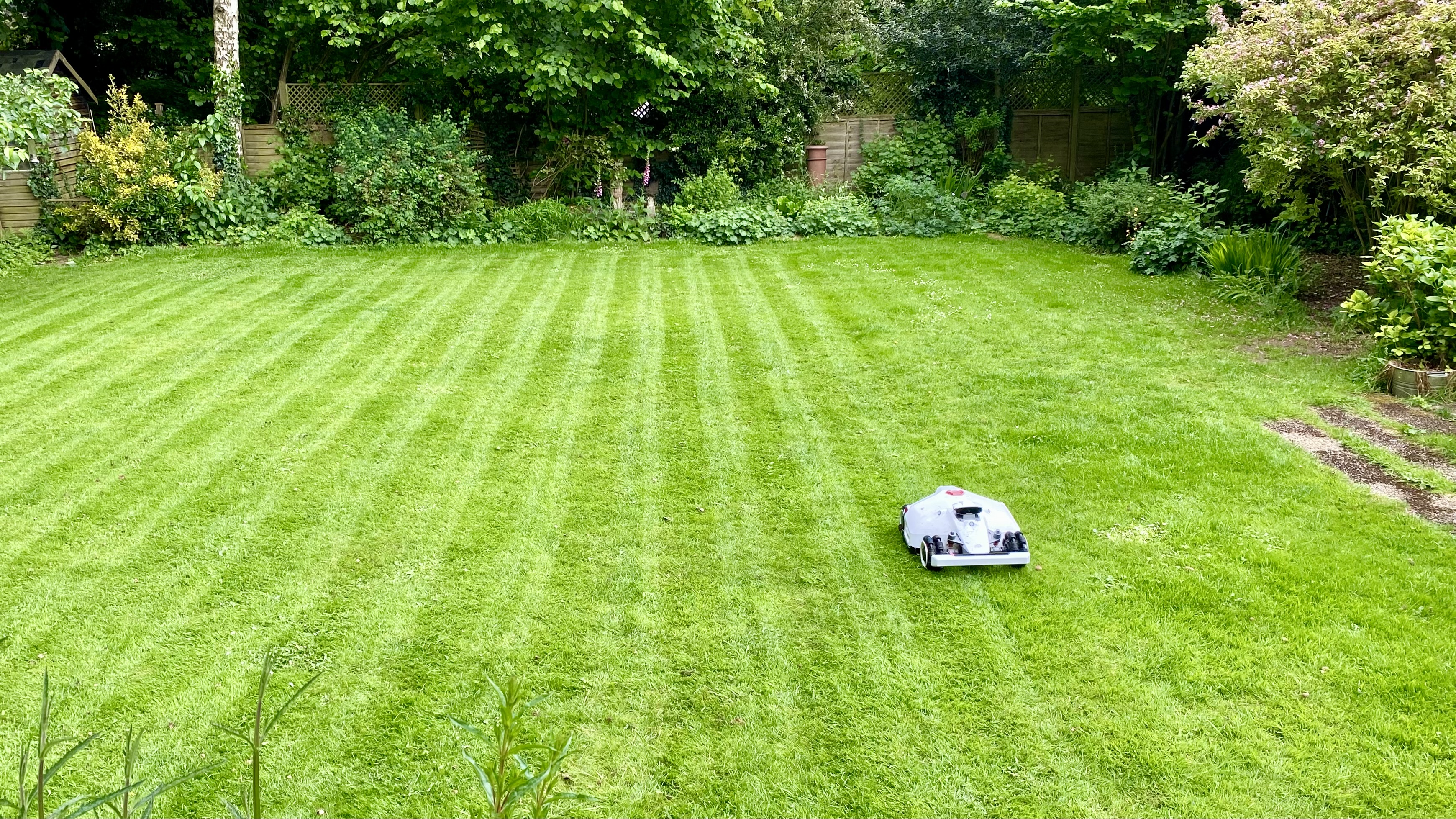
Mammotion LUBA 2 in the process of producing some beautiful lawn stripes
Most of today’s robot mowers – both wired and wireless – are equipped with spinning horizontal disks with razor blades attached to their outer edge. This system ensures an extremely fine cut akin to using a pair of scissors. And because the onboard cutting motor is so quiet, you can hardly hear the mower in operation even when it is just a few metres away.
I would say that the biggest defining factor with today’s wireless robot mowers is their remarkable ability to cut a lawn in perfectly straight parallel stripes – and in any direction you wish. I can’t stress enough the wow factor of seeing your lawn looking like the Centre Court at Wimbledon after just one cut. And if you schedule the mower to cut every two days or so, this pristine appearance continues throughout summer.
Another major bonus of having a system like this is that the grass is cut using the mulching technique, whereby the finest of nitrogen-rich grass cuttings are fed back into the earth to serve as fertiliser. What’s not to like?
6. Multi-zone mowing
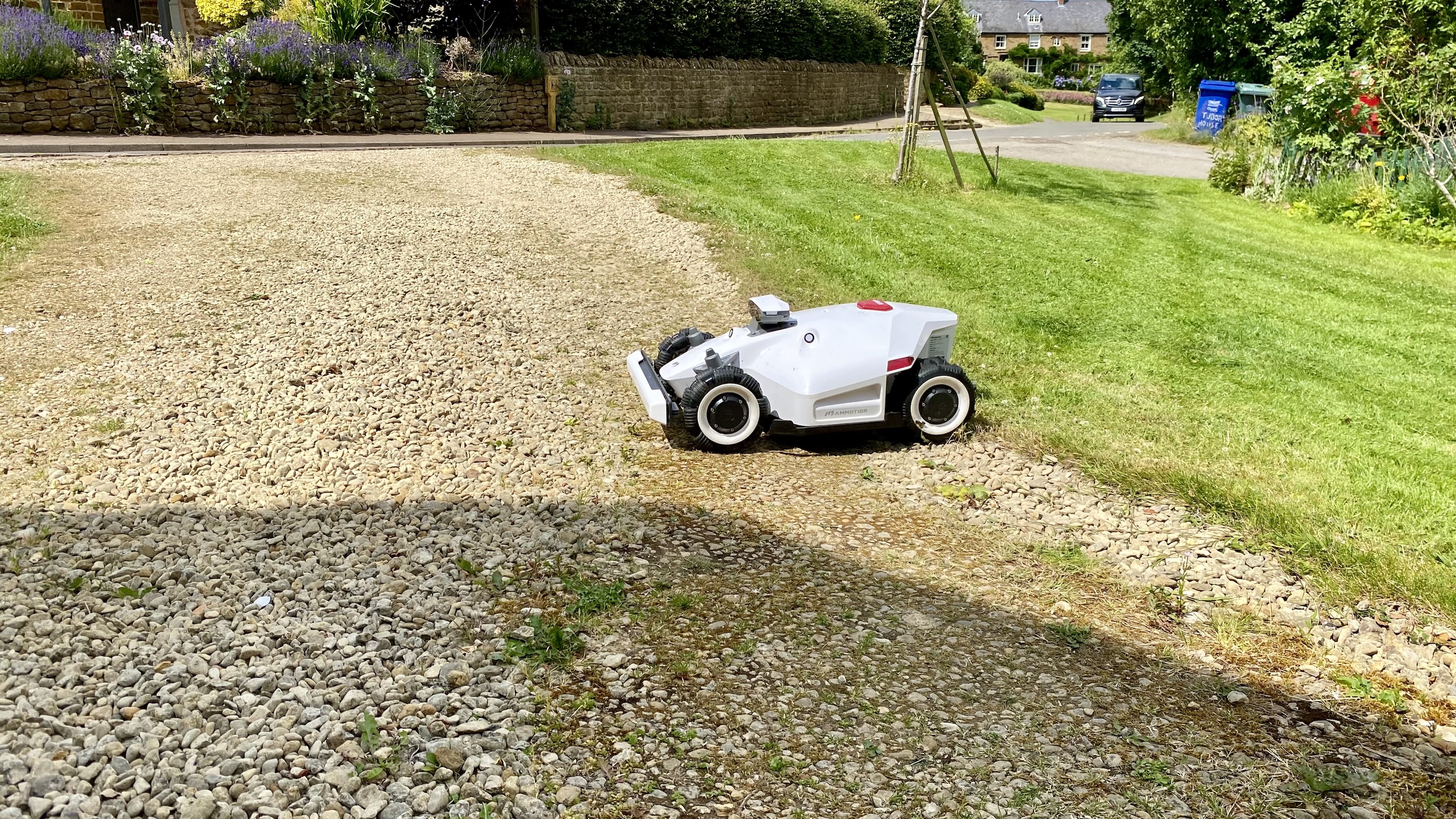
Mammotion LUBA on a mammoth multi-zone session
Wire-free mowers also open the door to multi-zone management, allowing homeowners with larger or more complex gardens to create different mowing zones with custom schedules and cutting heights. Whether it’s a tightly clipped front lawn or a wilder back meadow, the mower can be programmed to tackle each area accordingly – all without a single boundary wire in sight.
All you have to do is map your various lawns and then create virtual passageways between each zone by manually driving the robot using the app’s RC car-style controls. The robot will follow these paths on every multi-zone cutting session. However, you will need to ensure that there are no steps or gates in the way and that the passageways are clear of obstacles. Most modern wireless bots are capable of cutting in excess of eight different lawns in succession.
7. App control
All wireless robot mowers are interfaced via an app and this makes it easy to edit lawn maps, program cutting schedules, cutting heights and cutting directions, and generally keep tabs on the mower while its working. Furthermore, all this can be done completely remotely, even if you’re on the other side of the world.
The best wire-free robot mowers on the market
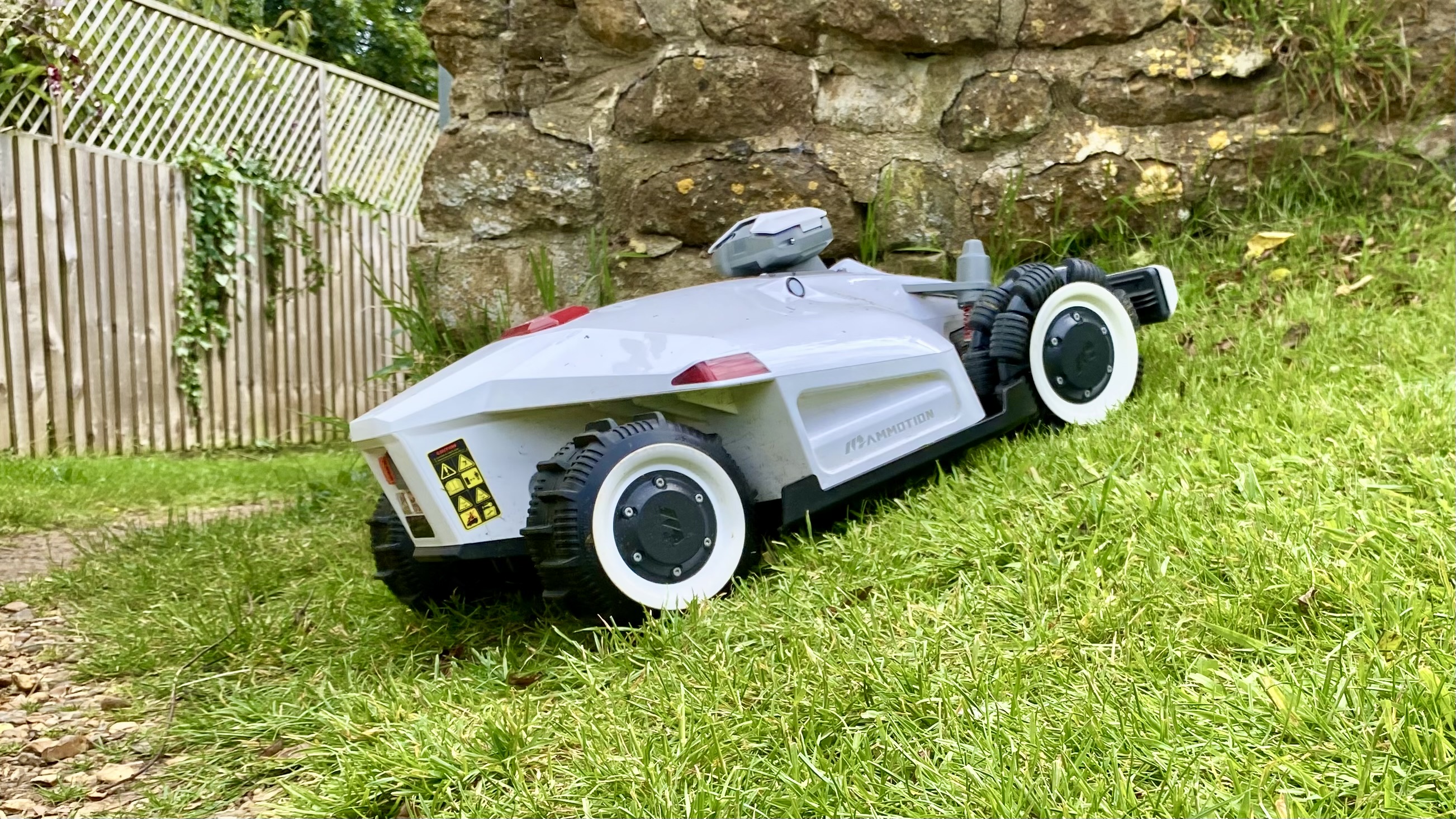
For sheer climbing and off-piste ability, this F1-style all-wheel-drive mower is a shoo-in. It’s wider-than-average 16-inch cutting deck means faster operation and much wider lawn stripes that look fantastic.
Mammotion LUBA Mini
Meet the LUBA 2’s little sibling, an equally adept model for smaller lawns.
This camera-based model requires no RTK GPS antennae and uses the power of AI-enhanced dual cameras to bring all-seeing autonomous Tesla-style tech to your lawn.
Segway was one of the first companies to bring wire-free practicality to the masses. You can’t go wrong with this impressive lawn beast.
Anthbot Genie
A newcomer to the market, this clever sward swallower uses RTK GPS and cameras to map a lawn automatically and keep it in tip-top condition on a near daily basis.
Derek (aka Delbert, Delvis, Delphinium, Delboy etc) specialises in home and outdoor wares, from coffee machines, white appliances and vacs to drones, garden gear and BBQs. He has been writing for more years than anyone can remember, starting at the legendary Time Out magazine – the original, London version – on a typewriter! He now writes for T3 between playing drums with his bandmates in Red Box (redboxmusic).
You must confirm your public display name before commenting
Please logout and then login again, you will then be prompted to enter your display name.
